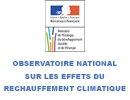GRAAL – Measure of adaptive potential of forest trees to climate change : in situ and ex situ approaches on altitudinal gradients using crossed transplantation experiments
GRAAL – Measure of adaptive potential of forest trees to climate change : in situ and ex situ approaches on altitudinal gradients using crossed transplantation experiments
Current climate changes occur with a quick rising of medium temperature and modification of precipitations rhythms, but also with a growth of frequency of extreme events.
A recent example of these changes is heat-wave and drought in 2003, resulting in great mortality in some forests and raising concerns.
Some studies showed that if some trees have suffered, others underwent the heat-wave without any apparent damages. Are we witnesses of a natural selection process, of a plastic adjustment or of a beginning of extinction?
Forest trees have a certain adaptability which in the past allowed them to colonize environments with very different climates; within same species, trees sometimes are divided along marked environmental gradients. The most spectacular case is that of some mountain species which divide along altitudinal gradients corresponding to temperature variations higher than those predicted for climate change on a century scale. They are unique models to study trees’ adaptation to climate change.
The purpose of this project is to use altitudinal gradients to study the potential of both genetic response (modification of frequency of genes from one generation to another) and plastic one (modification of phenotype with constant genotype) to climate change in two forest trees species representative of mountain areas: larch and silver fir. Features allowing a retrospective approach of phenotypic reaction of individual to the environment will be used, along with features with a strong adaptive value such as phenology. Combinations of genotypic and phenotypic approaches will be used, both directly along altitudinal gradients, and indirectly on crossed transplantation experiments of genotypes coming from different altitudinal levels.
Results will allow determining for which species and altitudinal levels we can fear negative effects of climate change. They will also allow determining whether an adaptive potential to climate change exists within species and whether this potential is rather plastic (therefore able to show up on a short term) or genetic (on a longer term).
ONF (National Forests Office), the organization responsible of studied forests management, is involved in the project and will help us, starting from our results, to express them in proposals directly available to managers.
In order to observe significant trends, we chose to associate several models and several approaches and to give experiments the needed dimensions to a statistical power which will allow appreciating impacts and distinguishing the different variables responsible of the studied effects.
A special effort will be made in the description of the variation along gradients: environmental (especially climatic), phenotypic and genetic, taking into account interactions between trees and insects with two models, alpine larch and larch moth, and – for the two species, larch and fir – cone insects.
| Coordinators |
Philippe Rozenberg – INRA |
| Partnership |
INRA, UR 0588, un ité de recherche AGPF, Orléans En plus des unités expérimentales et de service, deux structures techniques de l’INRA sont associées au projet : Plateau Technique Génobois (Orléans et Bordeaux) |
| Funding |
MEEDDM
|




